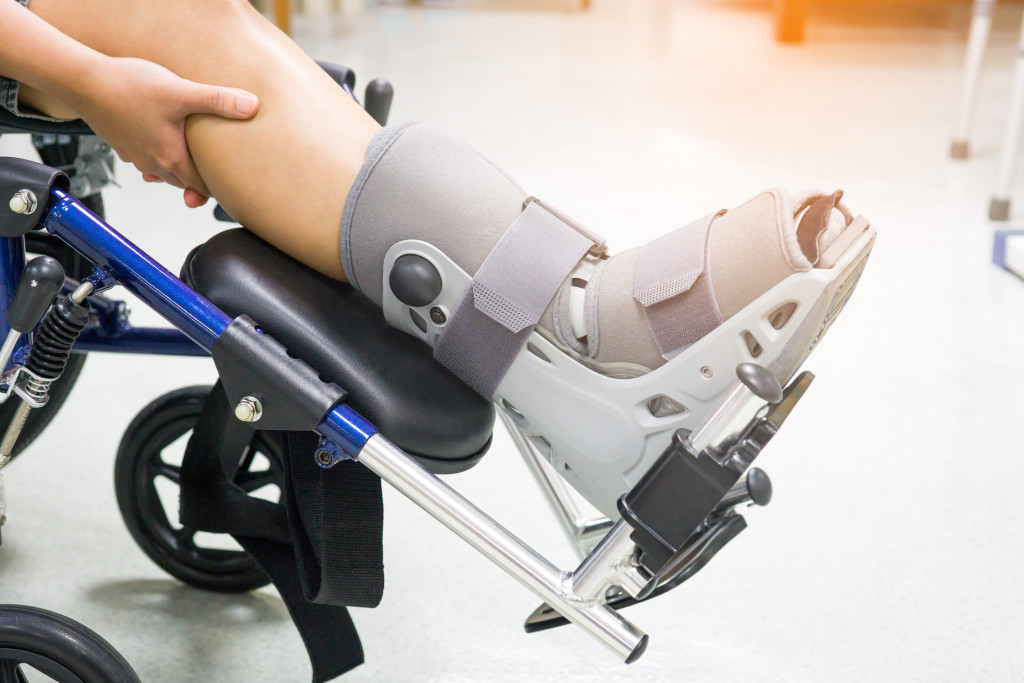- Recovering from a severe injury such as a torn ACL or spinal cord injury is essential to regaining physical and mental health, restoring self-confidence, and improving overall functioning.
- Follow up with physical therapy for a range of motion exercises to reduce muscle tension, improve balance control, and enhance coordination between muscles and joints.
- Avoid overexertion by starting light activities and gradually increasing activity intensity as body strength increases.
- Consult a doctor throughout the rehabilitation process for proper guidance on tailored exercises, progress monitoring, pain management, and safety assurance during recovery.
Recovering from a severe injury, such as a torn ACL or spinal cord injury, is incredibly important. Severe damage can result in long-term physical and psychological effects that drastically reduce the quality of life and limit future opportunities. It is, therefore, crucial that injured individuals seek out the best care and treatment for their condition so that they can return to a healthy and happy lifestyle.
Acute injuries often lead to both physical disabilities and emotional trauma. According to the National Center for Biotechnology Information, people with traumatic injuries experience reduced physical functioning, decreased ability to perform activities of daily living (ADLs), and increased dependence on family or healthcare professionals.
Depression, sleep disturbances, post-traumatic stress disorder (PTSD), chronic pain, fear of movement or re-injury, altered body image, and social isolation might be possible following a severe injury. Furthermore, those who suffer from spinal cord injuries are more likely to have additional problems such as impaired breathing, paralysis below the affected area, spasms, bladder dysfunction, and erectile dysfunction.
It will take months or years to recover from these injuries, especially if additional physical or mental health problems arise. However, your efforts do not end with complete recovery. After-care is essential and critical to maintaining a healthy and happy lifestyle.
Follow Up with Physical Therapy

Regaining mobility is essential for recovering from a severe injury because it allows individuals to resume their daily activities, improve their physical and mental health, and reduce the risk of future complications. Without proper mobility, individuals may be unable to perform basic ADLs independently, leading to increased dependence on family or healthcare professionals.
Moreover, regaining mobility helps people regain self-confidence by improving body image and reducing the fear of re-injury or movement. Additionally, it can help reduce sleep disturbances, depression symptoms, and PTSD caused by traumatic injuries. Physical therapy plays a significant role in restoring range of motion and assisting patients to recover faster while managing pain and avoiding potential complications.
Physical therapy promotes strength development and restores joint stability after injuries. Exercises such as stretching and strengthening can help increase muscle strength while decreasing muscle tension. This also promotes better balance by engaging muscles important for posture control. Furthermore, exercises may also improve cardiovascular health by increasing blood flow throughout the body, promoting tissue healing, and reducing inflammation.
Range of motion exercises is also critical for recovery from severe injuries as they target specific joints or areas that need more attention or rehabilitation. Those activities can help with range of motion and issues such as restricted flexibility or stiffness resulting from prolonged immobility or reduced sensation due to nerve damage. This can improve overall function through enhanced coordination between muscles and joints, allowing more efficient movement.
Avoid Overexertion and Achieve Gradual Progress
It is essential to understand that recovery from a severe injury takes time and should not be rushed. Overexertion can lead to further damage, so it is better to start with light activities and gradually increase intensity as your body’s strength and flexibility increase. It is also wise to take periodic breaks during physical activities, as this will help reduce strain on the affected area.
Finally, ensure you have an experienced healthcare professional who understands your specific injury and can guide you through rehabilitation. A good therapist can recommend exercises tailored to your needs, monitor progress, manage pain levels, and ensure safety throughout rehab.
Take Breaks and Doctor Consultations

Finally, it is essential to understand that recovery from a severe injury takes time and should not be rushed. Taking periodic breaks during physical activities is necessary to reduce strain on the affected area. Additionally, doctor consultations are highly recommended to monitor progress, manage pain levels, and ensure safety throughout rehab.
Here are a few things you can do while you rest:
Ice Pack
Cold therapy from an ice pack is a great way to reduce swelling and inflammation. It will help with pain relief and can be done multiple times daily for 10-15 minutes.
Heat Therapy
Heat therapy is also beneficial in reducing muscle tension, improving mobility, decreasing joint stiffness, and increasing blood circulation in the affected area. Heat packs or warm baths are the best ways to apply heat therapy.
Massage
Massage is another powerful tool that can help promote blood flow to the injured area, reduce inflammation and swelling, improve range of motion, break up adhesions and scar tissue, relax muscles, and relieve stress and tension.
MRI Scan
An MRI scan will provide a detailed picture of the injured area and help diagnose any possible structural damage. It is essential to identify if there are any complications, such as bone fractures or ligament tears, that need to be addressed post-surgery. An open MRI scanner will provide you with a more comfortable environment if conventional ones make you feel trapped.
Final Thoughts
These steps should be taken into consideration when recovering from a severe injury. Still, it is essential to remember that no two injuries are the same, so it is best to consult a doctor before making any treatment decisions. Following these tips will help you take control of your recovery and have a better outcome after completing your rehabilitation process. Good luck on your road to recovery!




